Kyrgyz Food: Basic Overview
Common Ingredients
Common Cooking Methods
Courses
Meals
Key Taste
Eating Etiquette
Meal Presentation
Culinary Festivals
Influence and Fusion
Popular Types of Kyrgyz Food
-
Bread and Doughs
Bread is a staple dish in Kyrgyz cuisine, used to pair with other traditional dishes.
Locals usually bake bread in a traditional clay oven, sticking the dough directly to the interior walls of the oven.
-
Stews
Rich and hearty Kyrgyz stews are popular options for the main course.
Common ingredients for making stews in Kyrgyzstan are meat (like lamb, beef, and horse meat) and vegetables.
These dishes are usually savory and suitable for the main course.
Due to the seasonality of Kyrgyz vegetables, some stews are more popular than others in summer and fall.
Kyrgyz stews contain less liquid than soups but still share many similarities.
-
Snacks
Kyrgyz snacks come in many forms, such as pastries, dumplings, and fried dishes.
There are many ways to prepare these snacks, including baking, deep-frying, steaming, and boiling.
Meat, vegetables, dairy products, and sugar are popular ingredients for preparing snacks in Kyrgyz cuisines.
Snacks account for a large proportion of famous Kyrgyz street food dishes.
Popular Kyrgyz dishes are famous culinary items from the cuisine of Kyrgyzstan that illustrate the nomadic way of life of the country. These dishes are mainly influenced by Uzbek, Russian, Dungan, Uyghur, and Turkish cuisines.
In Kyrgyzstan, many dishes feature meat and dairy products and have several things in common with the offerings from Central Asian countries.
I will introduce you to the common features of traditional Kyrgyz food, including its global popularity and healthy aspects. Next, you will explore the best 22 dishes in the country.
Each of my recommended Kyrgyz specialties is an interesting take on how people in the Central Asia region make use of their ingredients and cooking techniques to create fantastic dishes.
Next, I suggest looking deeper into Kyrgyz cuisine by finding out the reasons that make the country’s dishes popular and recommended beverage accompaniments.
22 Most Popular Kyrgyz Dishes with Filters
I have 22 mouth-watering Kyrgyz dishes to share with you. Explore these food suggestions more easily with my interactive filters regarding alphabetical sorting, main ingredients, taste, cooking methods, dish types, and courses.
But don’t stop there; discover traditional delicacies, national dishes, popular specialties, street eats, and exotic dishes in Kyrgyz with my other filters.
Beshbarmak
- National
- Traditional
Beshbarmak is a well-known Kyrgyz dish made with boiled meat, noodles, and a savory onion sauce. Its name translates to “five fingers,” reflecting the nomadic tradition of eating it with hands.
The preparation of beshbarmak involves boiling meats like horse or lamb and then slicing them thinly. The noodles (made from flour, water, eggs, and salt) are rolled out thinly, boiled, and combined with the meat and sauce.
Beshbarmak is often presented on large platters with noodles forming the base with meat and generously drizzled onion sauce.
Tandyr Nan
- Traditional
Tandyr nan, or nan, is a traditional bread variety and a staple side dish in Kyrgyzstan. It boasts a recognizable disc shape and is cooked in a tandyr (a tandoor oven).
The top of tandyr nan is usually decorated with an attractive stamp pattern and garnishes like sesame seeds. Kyrgyz people treat tandyr nan and other types of bread with the utmost respect, a trait shared by other Central Asian countries.
Paloo
- Traditional
Paloo is a traditional rice dish from Kyrgyzstan and a local take on pilaf. Its main ingredients are rice, meat, carrots, onions, garlic, and spices, with beef, mutton, or chicken as popular protein choices.
To prepare paloo, the rice is first fried with the other ingredients and then boiled in broth. Ideally, paloo is cooked in a large cast-iron pot over an open fire. Then, people garnish paloo with shredded meat and onion sauce.
Manty
- Traditional
Manty is a Kyrgyz dumpling that often comes in a substantial size. It is filled with a mixture of minced meat, either lamb or beef, onions, and spices.
This flavorful filling of manty is then encased in a simple dough and steamed. Manty is usually served hot and is often adorned with toppings like butter, sour cream, or yogurt.
As a staple at Kyrgyz celebrations and family gatherings, manty symbolizes warmth and togetherness.
Dimlama
- Traditional
Dimlama is a popular stew in Kyrgyzstan that combines meat with potatoes, onions, vegetables, and occasionally fruits. Originating from Turkic and Uzbek cuisines, this hearty dish is cooked in a sealed pot over low heat, letting the ingredients gently simmer in their own juices.
Dimlama is a seasonal dish that capitalizes on the fresh vegetables available during summer and fall. To enhance its taste, garlic, herbs, and other condiments are usually added. Dimlama is traditionally served on a large plate.
Shashlik
- Street Food
- Traditional
Shashlik is a Kyrgyz dish of skewered and grilled meat, with lamb and beef as popular choices. It is also popular in other Central Asian countries and Russia.
Making shashlik starts with marinating the meat overnight in a mixture of wine, vinegar or sour juice, herbs, onions, and spices. In Kyrgyzstan, street vendors or social gatherings often cook shashlik on a mangal using wood, charcoal, or coal as fuel.
This grilled meat delicacy is typically accompanied by bread, rice, or noodles. Characterized by its savory flavor, shashlik skewers are enhanced with vegetables like bell peppers, onions, mushrooms, and tomatoes.
Samsa
- Street Food
- Traditional
Samsa is a beloved Kyrgyz baked pastry or pie in a triangular or semi-circular form. It’s traditionally filled with a spiced mixture of minced meat and spices. Occasionally, fat is incorporated to ensure juiciness.
The outer layer of a samsa is crafted from layered dough, like puff pastry. Samsa is often baked in a tandoor oven until flaky and crisp on the outside.
While the traditional samsa filling is meat-based, variations with vegetables, cheese, or pumpkin are also prevalent. Samsas are best enjoyed hot, straight from the oven, with yogurt, pickled vegetables, or tea.
Kuurdak
- Traditional
Kuurdak is a traditional Kyrgyz meat dish that roasts or fries meat and vegetables. Some variations opt for lamb, mutton, beef, or sheep liver.
Aside from beef, onions also join the mix to give kuurdak an aromatic touch. Rich in flavor, kuurdak is a hearty dish that pairs well with bread, rice, or noodles.
Shorpo
- Traditional
Shorpo is a favorite Kyrgyz soup created by combining lamb or mutton as its primary ingredient. This clear broth soup mainly focuses on the meat’s flavor and incorporates vegetables such as potatoes, onions, and carrots.
To achieve a rich broth for shorpo, the meat is browned initially and then simmered alongside the vegetables. Hot shorpo is particularly cherished during the colder months and social gatherings in Kyrgyzstan.
Laghman
- Traditional
Laghman is primarily a dish in Kyrgyzstan with long, hand-pulled noodles. It is typically made with lamb or beef, bell peppers, radishes, onions, tomatoes, and garlic.
These meat and vegetables are cooked in a spicy and savory sauce to make Kygryz-style laghman. The noodle dish is often garnished with fresh herbs and accompanied by spicy condiments.
With its Uyghur origins, laghman has seamlessly integrated into Kyrgyz cuisine and stands as a sought-after delight in local eateries.
Boorsoq
- Street Food
- Traditional
Boorsoq is a Kyrgyz snack made by deep-frying small pieces of dough until they achieve a golden brown hue. The dough is a combination of flour, water, salt, and occasionally yeast or baking powder.
Boorsoq comes in many shapes, like tiny pillows or intricate knots. When fried, these pieces boast a crispy exterior, while the inside remains soft and fluffy.
Locals enjoy boorsoq with tea and dip it in accompaniments like jams, honey, or even sour cream for added flavor.
Chuchpara
- Traditional
Chuchpara is a famous type of filled dumpling in Kyrgyzstan. Locals prepare it with dough, mutton, onions, salt, and pepper.
To prepare churcha, people roll out the dough thinly and cut it into circles. Then, the meat filling is placed in the center, and the edges are sealed. These dumplings are then boiled in broth until they rise to the surface.
Chuchpara is typically served as a soup or as a side dish with bread or salads. Sour cream, butter, or fresh herbs are popular accompaniments.
Qattama
- Traditional
Qattama is a multi-layered flatbread or pastry popularly enjoyed in Kyrgyzstan. Locals mainly pair it with savory dishes or sweet accompaniments like honey or jam. The distinct flaky and crispy texture makes qattama a delightful treat.
The dough of qattama is rolled out thinly, slathered with butter or oil, folded, and then rolled out once more. This process creates a layered dough with a rich flavor.
Orama
- Traditional
Orama, literally “to roll/ wrap,” is a steamed pie that is well-known among the Kyrgyz people. It features a thin dough generously filled with minced potatoes, meat, fat, and occasionally vegetables.
People typically roll orama into elongated wraps, which are arranged in a circular shape and steamed in a pot. Orama is a hearty and delicious main dish as well as a snack.
Kurut
- Traditional
Kurut is a dried, fermented Kyrgyz dairy product originating from the milk of various livestock, including sheep, cows, or goats. It is typically hard and shaped into small balls or chunky pieces.
The fermentation process imparts a sour, tangy flavor to kurut. Locals savor kurut directly as a snack, dissolve it in water to craft a beverage, or incorporate it into many traditional dishes.
In Kyrgyzstan, kurut is a favored companion on long journeys, prized for its lightweight and nutritious attributes.
Chuchuk
- Street Food
Chuchuk is a sausage made from horse meat and fat in Kyrgyzstan. This renowned meat and fat concoction is typically encased in horse intestines.
For preservation, chuchuk is often smoked or dried, creating a distinct flavor. Smoked chuchuk has a firmer bite, whereas boiled or steamed versions tend to be softer.
Chuchuk is frequently served alongside other traditional dishes, especially during large gatherings or holiday meals.
Byzhy
- Exotic
Byzhy is a Kyrgyz sausage with lamb meat and sheep’s liver. The preparation involves grinding the meat and liver, seasoning them with salt and pepper, and then stuffing this mixture into the sheep’s intestine.
Boiling and frying are popular methods of cooking byzhy. Crispy byzhy is often served hot with bread, rice, or noodles, delivering a sour and savory taste.
Historically, byzhy was a popular staple for the Kyrgyz, who frequently consumed it during hunting expeditions or on their nomadic journeys.
Tokoch
- Traditional
Tokoch is a traditional Kyrgyz fried bread made by rolling out the dough, layering it with a minced meat and onion mixture, and then folding it into a circle. Its staple ingredients are dough, meat, and onions.
Tokoch is fried in oil until it achieves a golden and crispy texture. A combo of tokoch and tea, butter, jam, or honey is a wonderful entree or snack.
Tokoch plays a significant role in jyt chygaruu, a ritual performed to honor and feed the departed.
Kaymak
- Traditional
Kaymak is a rich, creamy dairy product often enjoyed in Kyrgyzstan. It is similar to clotted cream and is traditionally produced by simmering milk slowly, letting it cool, and fermenting the milk for several hours.
The resulting thickened cream on the surface is subsequently skimmed off and stored as kaymak. Compared to typical cream, kaymak boasts a thicker, creamier consistency and a more decadent taste.
In Kyrgyzstan, kaymak is a favored accompaniment, often spread on bread, paired with desserts, or put on top of traditional dishes.
Shalgam
Shalgam is a popular salad in Kyrgyzstan, consisting of radishes, carrots, onions, garlic, and pepper. Occasionally, there are additional vegetables, like bell peppers.
This radish salad is a refreshing cold dish that provides a wonderful contrast to many rich and savory dishes in Kyrgyz cuisine. Outside of Kyrgyzstan, shalgam is also a staple salad in Kazakhstan.
Qarta
- Exotic
Qarta is a traditional Kyrgyz dish prepared with horse rectum, the part of the intestine next to the anus section. This intestine part is boiled and pan-fried to achieve a chewy texture and a savory, slightly buttery taste.
Since the rectum has a distinct odor, making qarta requires cleaning it carefully. The rectum is then sliced and simmered in a broth with dill and simple spices.
In Kyrgyzstan, locals often pair qarta with sausage and other dishes made with horse meat.
Naryn
- Exotic
Naryn is a Kyrgyz dish with many variations throughout Central Asia. It combines fresh hand-rolled noodles, finely chopped or shredded horse meat, and onion sauce or horse meat sausage.
Naryn can be served as a cold pasta dish (kuruk norin) or as a hot noodle soup (khul norin). Its noodles are cooked either in plain water or in a flavorful broth.
Thanks to these features in the ingredients and cooking techniques, Kyrgyz dishes offer many interesting features, making them a beloved item amongst many.
Why Are Kyrgyz Dishes Famous?
Kyrgyz dishes are renowned for their unique blend of influences, cooking techniques, and diverse ingredients.
Kyrgyzstan is located in Central Asia, which has been a crossroads for various civilizations and cultures, leading to a rich tapestry of culinary influences in the region.
Kyrgyz cuisine is significantly influenced by the culinary traditions of neighboring Central Asian countries (especially Uzbekistan), Russia, Turkey, and China (including Uyghur and Dungan cuisines).
The prominence of livestock in Kyrgyz culture has made meat a central component in many dishes, with lamb, beef, and even horse meat as popular ingredients. Dairy products are also extensively used in local cuisine.
A traditional Kyrgyz meal is served on a dastarkhan, which is a large cloth spread on the floor or a low table or the table itself.
A well-laid dastarkhan must feature various dishes to showcase the host’s generosity.
Bread is a staple of Kyrgyz cuisine and is often prominently displayed on the dastarkhan. Locals serve freshly baked bread whole to symbolize warmth and hospitality; wasting bread is severely frowned upon.
Notable features of Kyrgyz dining etiquette are treating elders and guests with respect, eating traditional dishes with hands or spoons, and serving food in large communal plates or bowls to demonstrate the communal spirit.
Which Beverages Can Be Paired With Kyrgyz Dishes?
In Kyrgyz cuisine, beverages play a significant role in enhancing the flavors of dishes. Allow me to introduce four famous beverages in Kyrgyzstan that are often enjoyed in a local meal.
Kymyz
Kymyz is a fermented drink made from mare’s milk. Its tangy and slightly alcoholic taste goes well with grilled dishes and cold appetizers, especially salads.
Chalap
A fermented dairy beverage made primarily from yogurt, chalap is a perfect match for many traditional Kyrgyz bread, pastries, and meat-based dishes.
Tea
Tea, especially green tea, is a staple beverage in Kyrgyzstan and is often served alongside various dishes during meals. From hearty beshbarmak to sweet boorsoq, tea is always a suitable accompaniment.
Bozo
Bozo is a slightly alcoholic beverage made from fermented millet. Its tangy flavor creates a wonderful contrast with rice dishes, hearty stews, and savory meat-based dishes.
Have you found your favorite Kyrgyz dishes? Please share this post on Kyrgyz dishes with your friends and tell me what you think in the comment section!


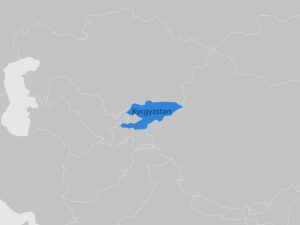
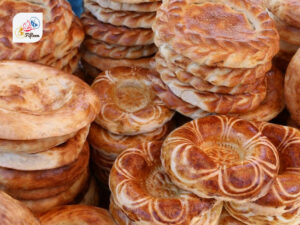
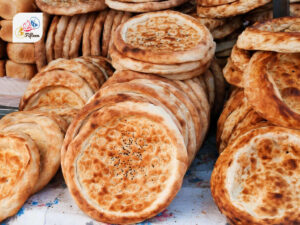
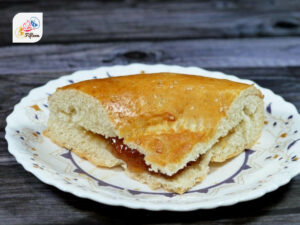
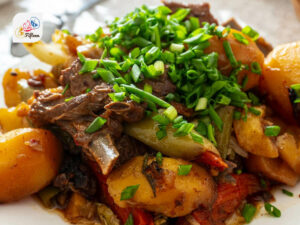
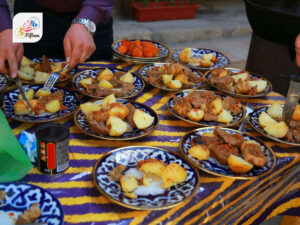
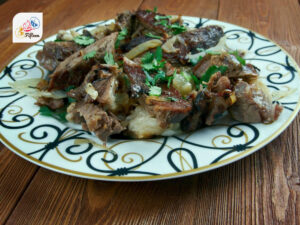
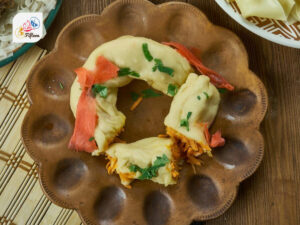
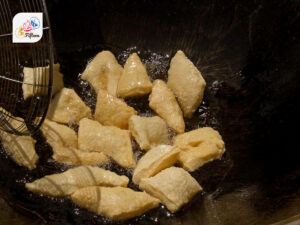
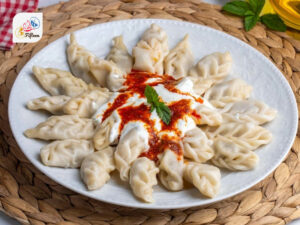
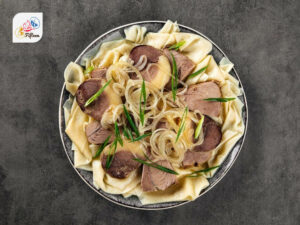
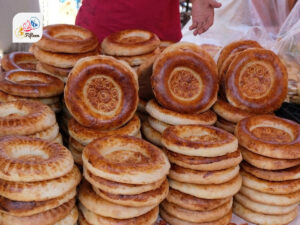
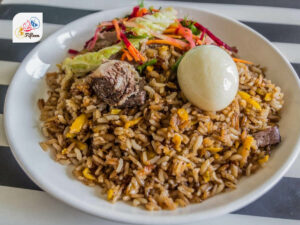
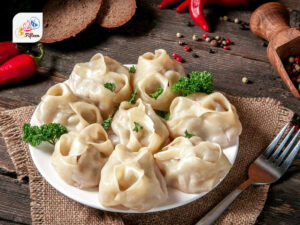
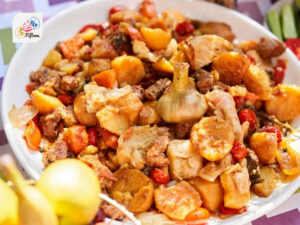
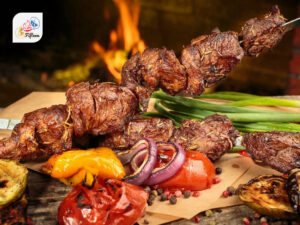
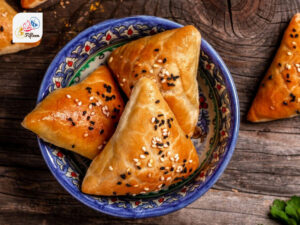
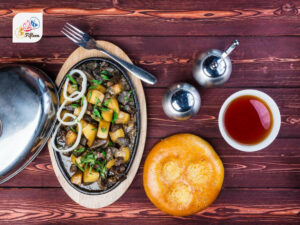
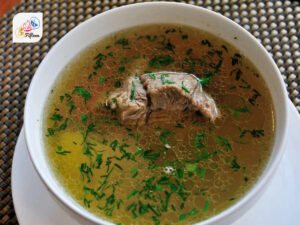
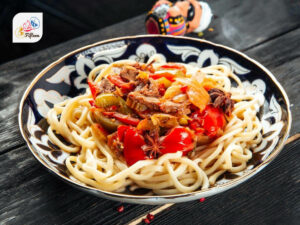
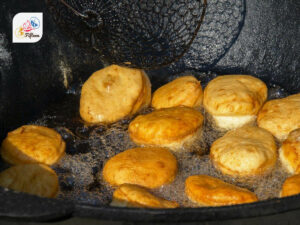
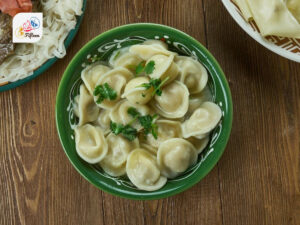
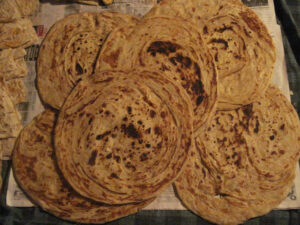
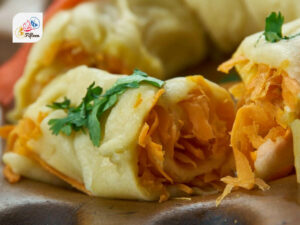
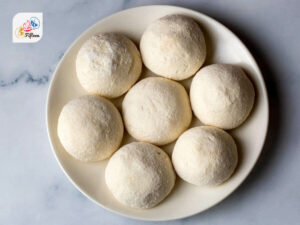
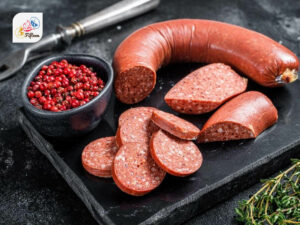
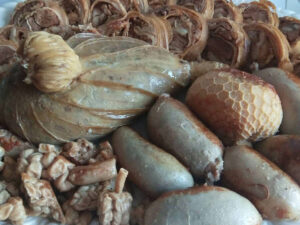
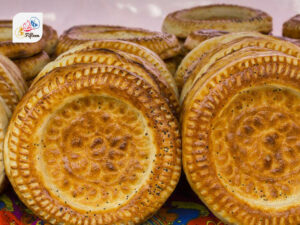

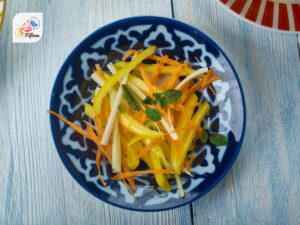
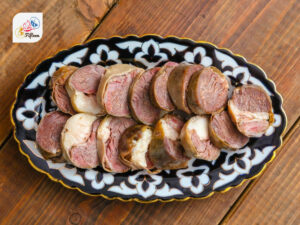
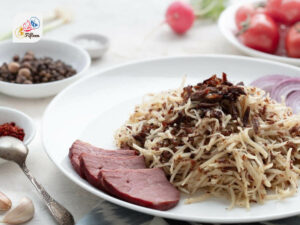
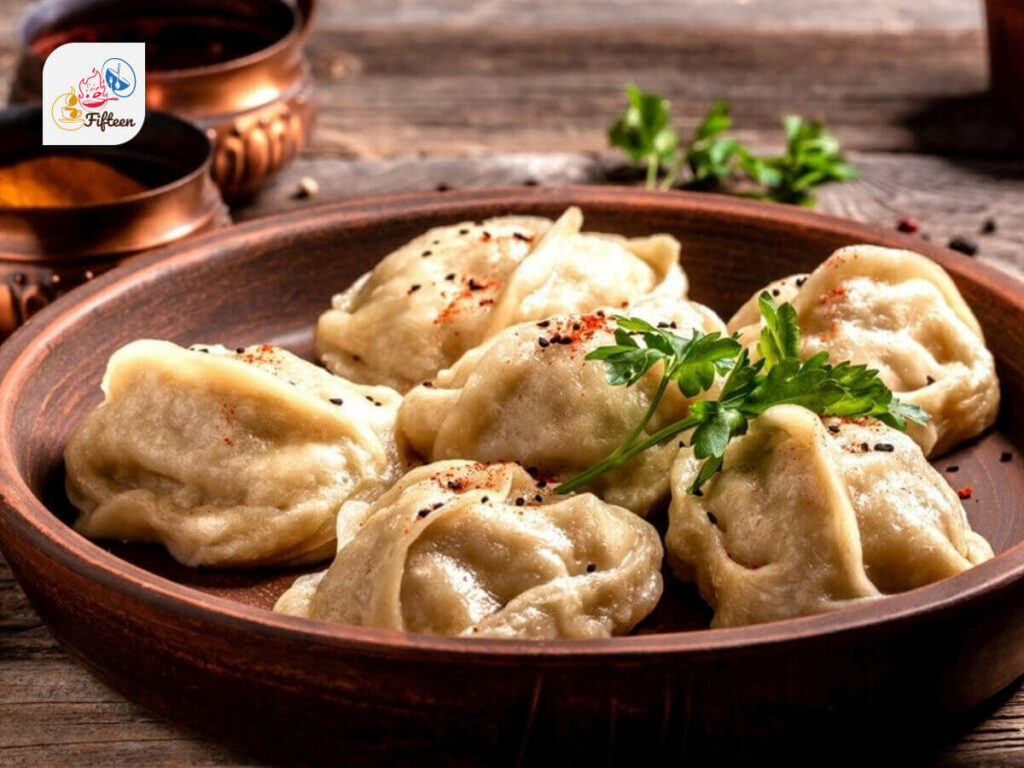
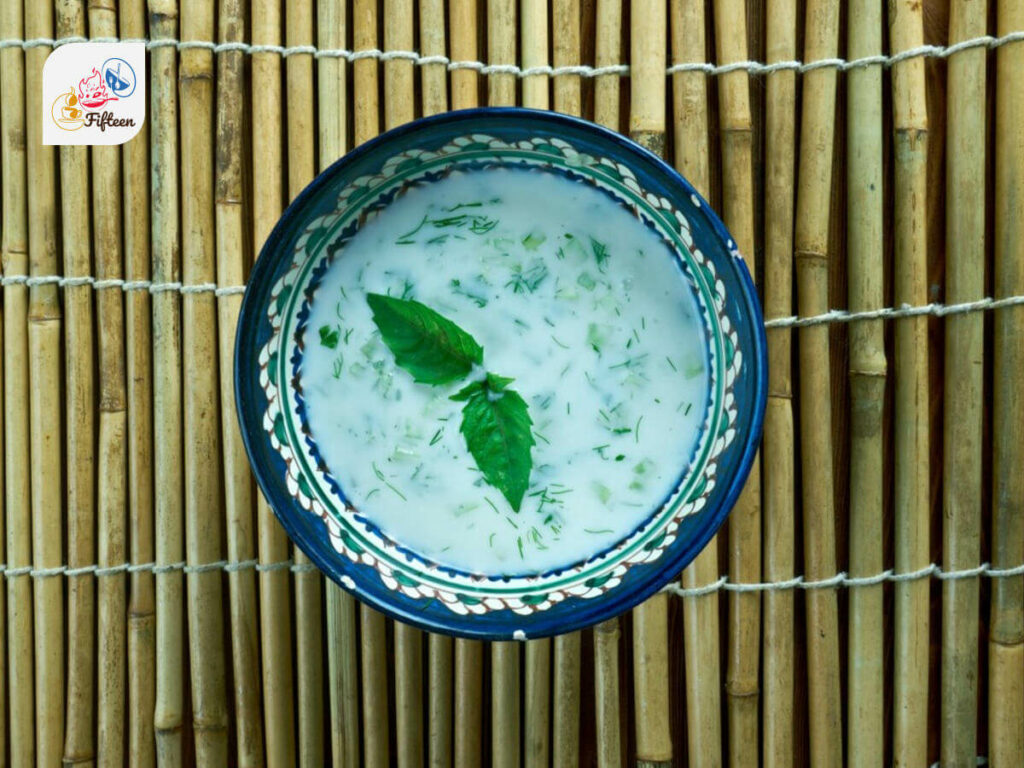
Jamie Scott
Editor in Chief, Senior Content Writer
Expertise
Home Cooking, Meal Planning, Recipe Development, Baking and Pastry, Food Editor, Cooking-video Maker, Western Food Evaluation Expert
Education
Le Cordon Bleu College of Culinary Arts
Local Community College, New York, NY
Jamie Scott is a skilled culinary expert and content creator specializing in Western cuisine. With over 15 years in the culinary field and formal training from Le Cordon Bleu, Paris, Jamie deeply understands how to blend nutrition with delicious flavors. His passion for cooking matches his commitment to making healthy eating accessible and enjoyable.
On Fifteen.net, Jamie brings a fresh perspective to classic dishes and beverages, offering readers insightful recipes, cooking tips, and a fresh view on meal planning that emphasizes taste, health, and simplicity.